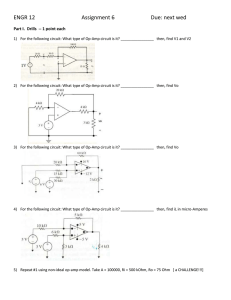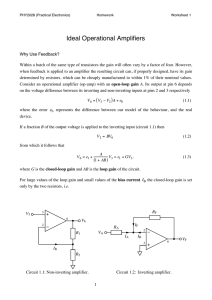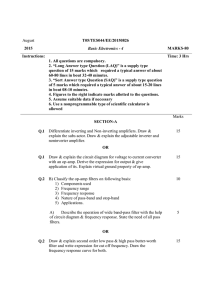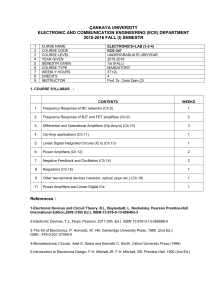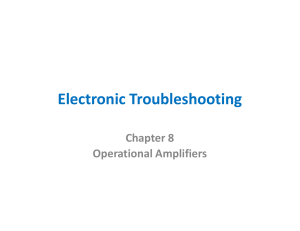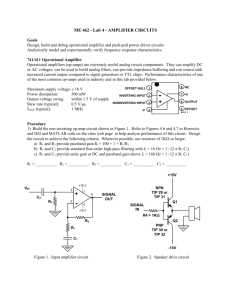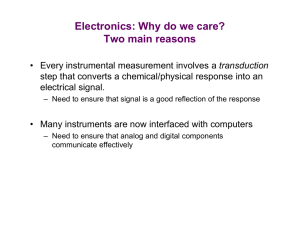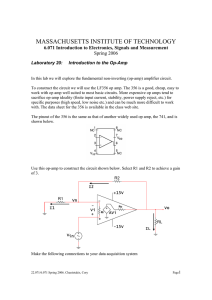Official Course Outline
advertisement
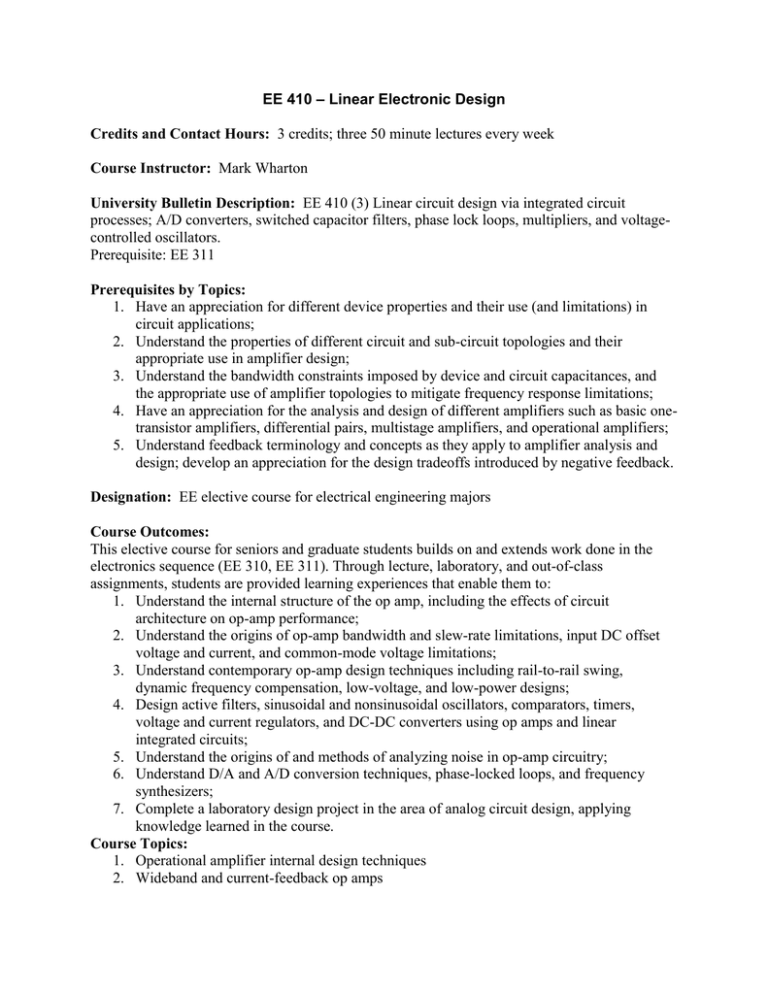
EE 410 – Linear Electronic Design Credits and Contact Hours: 3 credits; three 50 minute lectures every week Course Instructor: Mark Wharton University Bulletin Description: EE 410 (3) Linear circuit design via integrated circuit processes; A/D converters, switched capacitor filters, phase lock loops, multipliers, and voltagecontrolled oscillators. Prerequisite: EE 311 Prerequisites by Topics: 1. Have an appreciation for different device properties and their use (and limitations) in circuit applications; 2. Understand the properties of different circuit and sub-circuit topologies and their appropriate use in amplifier design; 3. Understand the bandwidth constraints imposed by device and circuit capacitances, and the appropriate use of amplifier topologies to mitigate frequency response limitations; 4. Have an appreciation for the analysis and design of different amplifiers such as basic onetransistor amplifiers, differential pairs, multistage amplifiers, and operational amplifiers; 5. Understand feedback terminology and concepts as they apply to amplifier analysis and design; develop an appreciation for the design tradeoffs introduced by negative feedback. Designation: EE elective course for electrical engineering majors Course Outcomes: This elective course for seniors and graduate students builds on and extends work done in the electronics sequence (EE 310, EE 311). Through lecture, laboratory, and out-of-class assignments, students are provided learning experiences that enable them to: 1. Understand the internal structure of the op amp, including the effects of circuit architecture on op-amp performance; 2. Understand the origins of op-amp bandwidth and slew-rate limitations, input DC offset voltage and current, and common-mode voltage limitations; 3. Understand contemporary op-amp design techniques including rail-to-rail swing, dynamic frequency compensation, low-voltage, and low-power designs; 4. Design active filters, sinusoidal and nonsinusoidal oscillators, comparators, timers, voltage and current regulators, and DC-DC converters using op amps and linear integrated circuits; 5. Understand the origins of and methods of analyzing noise in op-amp circuitry; 6. Understand D/A and A/D conversion techniques, phase-locked loops, and frequency synthesizers; 7. Complete a laboratory design project in the area of analog circuit design, applying knowledge learned in the course. Course Topics: 1. Operational amplifier internal design techniques 2. Wideband and current-feedback op amps 3. Op-amp nonideal parameter limitations and their origins 4. Contemporary op-amp design techniques 5. Filter topology, active filters, switched-capacitor filters 6. Oscillators, comparators, timers 7. IC power amplifiers, voltage regulators, DC-DC converters 8. D/A and A/D converters 9. Noise in electronic circuits 10. Phase-locked loops and frequency synthesis 11. Student project presentations Student Outcomes Addressed: O.4.1. Graduates will have an in-depth technical knowledge in one or more areas of specialization. O.4.2. Graduates will have a practical understanding of the major electrical engineering concepts and demonstrate application of their theoretical knowledge of the concepts.



